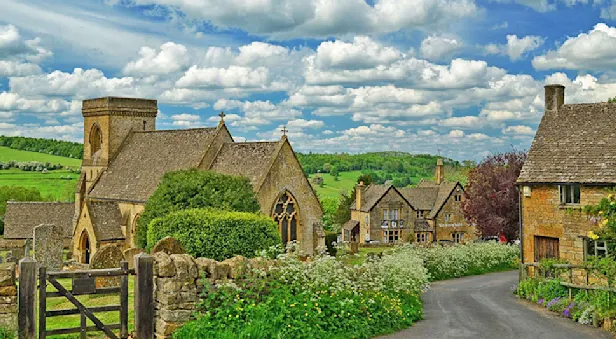Roe Deer Facts | Wildlife & Flora in the Cotswolds
The roe deer is a medium-sized deer, reaching approximately 23-27 inches at the shoulder, with the males typically averaging slightly bigger and sporting short three-tined antlers. Their summer coat which in the sunlight appears reddish and bright will fade to a gray-brown during the winter months. They seem to lack a tail with a pronounced cream-colored rump that will puff up when the animal is alarmed. Unlike the majority of deer species, male roe deer grow their antlers during the winter months to participate in a summer rutting season.
Roe deer are primarily solitary or in small groups, with larger groups of up to 15 becoming more common during the winter when food sources become limited. Their diet is varied and features buds and leaves of deciduous trees, shrubs, conifers, heather and grasses. They prefer mixed habitats of open grassland and woodland and are primarily found near the edges where they have easy access to cover, particularly in more urban environments. Males are seasonally territorial during the rut lasting from mid-July to August. The females typically establish a home range close to that of their mothers, while the males are forced to disperse farther. Males can become very aggressive during the rut, often engaging in combat with other males that occasionally results in server injury or death.
The females undergo a delayed implantation process, making them unique among hoofed mammals, with eggs beginning to develop in early January and birthing beginning in mid-May through mid-June. Typically, they will give birth to twins who will suckle within a few hours of birth. The young will regularly be left along with their dappled coat helping to camouflage them as they hide in vegetation.
Currently, the roe deer is abundant across England following reintroduction in the 19th century after extinction in the 18th century from over-harvesting. They are currently permitted to be hunted, although the government restricts the season and number of permits issued.
Spot Deer on These England & Scotland Adventures

The Cotswolds: Exploring English Nature
Wander ancient beech forests and wildflower meadows, follow hedgerows and trout-filled streams, tour private gardens and meet artisan food producers, in an idyllic landscape with a focus on native habitats and conservation.

























